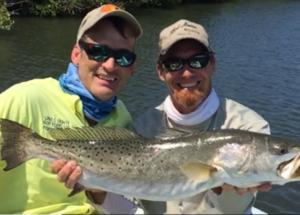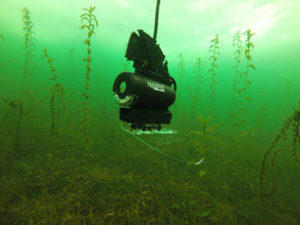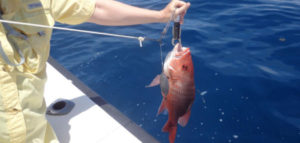Right on time, sandhill cranes showed up a few weeks ago, headed back north on their annual migration. This is a sure sign spring is not far away. Even more significant, daffodils in my yard started blooming last week, offering a small splash of bright yellow against all the browns and grays of lingering winter.
Thursday morning there was a strange bright light in the sky for a few minutes at my house, something not seen in days. Rainy, cloudy days seem the norm in February this year and many more are in the weather guessers forecast. Sometimes, although uncomfortable, it makes fishing and catching better.
Water in lakes is warming slowly. Sun on the water warms it faster so it has been slow. Longer days have made bass and other fish start moving more shallow, thinking about spawning. But cold nights are keeping them from getting in a hurry.
I went to Lanier a week ago last Thursday and fished one day in wind and bright sun and two days in the rain. It was interesting, and I spent a lot of time looking for bait and bass but was not successful. I was hoping to find a school of bass or a pattern that would help me in the Flint River Bass Club tournament last Sunday but did not.
In our February tournament six of us braved a rainy day to cast for eight hours. We landed only seven keepers longer than the required 14 inches on Lanier, and they weighed about 15 pounds. There were no limits and two fishermen didn’t have a keeper.
Jack “Zero” Ridgeway didn’t live up to his name, winning with three fish weighing 5.40 pounds. My one largemouth, the only one caught, weighing 4.85 pounds was good for second and big fish. Niles Murray was third with two at 3.24 pounds and Alex Gober placed fourth with one weighing 1.48 pounds.
Sometimes little things come together to make a difference. After fishing Friday without a bite I had dinner with Jim Farmer and his wife. He asked if I had tried the very back of coves where muddy water was running in from all the rain.
A few years ago I did an article with Ryan Coleman on Lanier after a lot of rain. He took me to the back of a creek where muddy water was running in and we caught some nice fish on spinnerbaits.
I really did not think much of those two things since I was expecting to catch big spotted bass on main lake rocky points.
Saturday, I again fished and looked at places where I expected spots to be feeding, and think I had one bite. That was a calm day with no wind, and wind usually helps make spots feed. When Sunday morning had wind, I was ready to fish a spinnerbait all day on rocky points.
I started on a rocky point where I won two club tournaments last November but never got a bite in 90 minutes of casting. While fishing another point nearby I kept hearing a noise like running water and spotted a small waterfall in a ditch. All the rain made water flow down the steep rocky bank and gurgle muddily into the lake, staining the whole ditch.
All the memories came back so I went to it and cast my spinnerbait all around it. When I cast right to the base of the small waterfall in about a foot of water a fish thumped my bait hard and I set the hook. I thought I had hooked a keeper bass about 20 feet from the boat, but when I set the hook it almost pulled me out of the boat.
The fish fought hard, especially with the short amount of line out, and I just knew I would lose it, especially after seeing how big it was. But I was able to net the fish and stop shaking after about ten minutes.
For the next three hours I rode around looking for more places where water was running into the lake and fished every one I found, but never got another bite. I had gone back to the place I caught the fish after about an hour to try it again, but the water flow had slowed to a trickle.
For the last three hours of the tournament I again tried deep, rocky points and banks and got one bite but did not hook it. I think it was a crappie or bream based on the way it hit, and I was fishing a jig and pig with the tips of the trailer tail dipped in chartreuse JJs Magic. Every fish in the lake will hit at the wiggling tails of a trailer like that.
The Potato Creek Bassmasters fished our tournament yesterday at West Point. I’m sure I spent hours fishing backs of pockets with muddy water. As I write this I wonder if they will be there!



